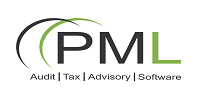Using Risk Management to Respond to CRISIS
When a crisis hits your organisation, how will you find out about it as a board member? Through employees, customers, or maybe virally through social media?
Hopefully though, your organisation has a well-prepared and well-rehearsed crisis plan, in which case you will most likely learn about the facts of the crisis speedily and directly from the organization’s authorized incident “commander” or spokesperson. You will know what steps you need to take, if any, and how management has prioritized its activities for a recovery. You may even have gone through a sensitivity analysis or a table-top scenario exercise with the management team. That gives you confidence that crises will be properly controlled if they arise.
The incidence of crises is rising. So is the impact of crises on organisations. In this article, we argue that boards, even when their organisations have risk vis-à-vis crisis management plans, have missed crucial steps for their organisations to pull through a crisis and get back to business. One of those steps is to have a robust risk management framework in place as it helps sustain stakeholders’ confidence in the company.
Risk management is “being proactive in the identification of business threats/crisis and opportunities and preparing for them”. In other words, it is a value protection and value creation exercise.
Here are some critical steps
- Articulate your appetite; define in advance what “event” is really a crisis, what risk you are capable of taking on, what your tolerance limits are and how they fit your short to long term corporate goals and strategic objectives.
- Establish appropriate governance; based on the your appetite and crisis/risk definitions, determine who is responsible for what, define clear roles and accountability, identify a “risk commander” and ultimately establish a risk culture by setting the tone at the top
- Develop policies, processes and procedures; like the risk management saying “what is not documented does not exist”. Document and approve risk management manual, standard operating procedures, service and operational level agreements to guide the decision makers and process owners. In addition, perform sensitivity analysis, scenario and stress testing to recognise the amount of work and coordination that goes into crisis situations
- Deploy appropriate tools; depending on the size of the business, develop in-house risk templates or purchase applications/software to support business operations. This makes work easier and also provides board some level of assurance.
- And yes, communicate (monitor and report) – be proactive and keep control of the information. Until risk situations are monitored and reported, it is as good as non-existent.
So does your current risk management practice considers the above? We invite you to read this article to learn about these critical tips for boards in ensuring oversight of its risk management framework.
Do you need support in any all or any of the above tips, please contact us on info@pml.com.ng; we will be glad to assist.


